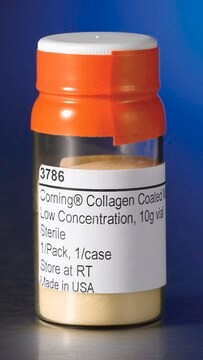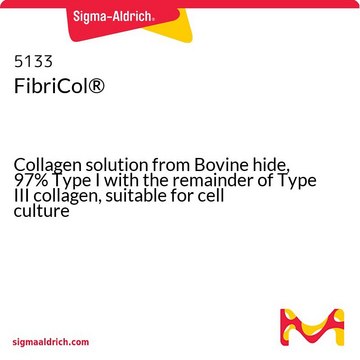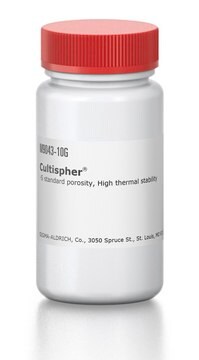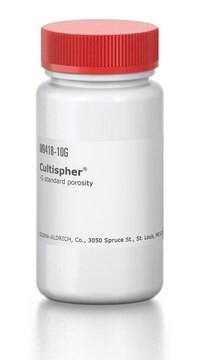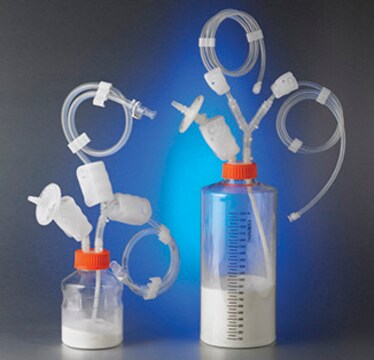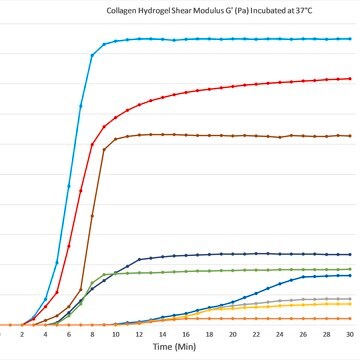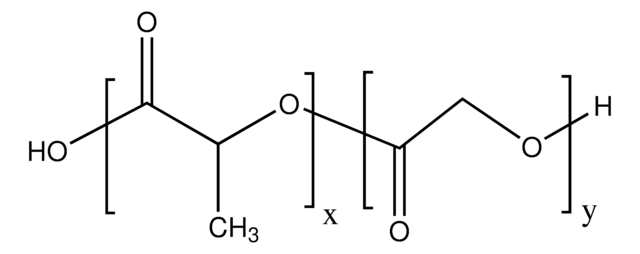Recommended Products
Product Name
SphereCol®, Human Collagen Type I Coated Beads, for 3D bio-scaffold
biological source
human
sterility
irradiated
form
liquid
packaging
pkg of 10 g
technique(s)
cell culture | mammalian: suitable
bead size
~125-212 μm
storage temp.
room temp
General description
SphereCol® human Type I collagen coated beads are ideal for growing cell in suspension. The collagen coated beads provide a natural in vivo-like environment to promote high cell growth while providing a large surface area for cells to attach with optimal surface area to volume ratios. SphereCol® provides a 3D bio-scaffold which is optimal in many cell culture procedures.
SphereCol®, human collagen coated beads are coated with highly purified Type I human collagen derived from a human fibroblast cell culture process, VitroCol. The collagen provides an optimal coating on the beads to enhance cell attachment, cell viability, cell proliferation and cell function. The collagen beads range in size from about 125 to 212 micron.
SphereCol®, human collagen coated beads are coated with highly purified Type I human collagen derived from a human fibroblast cell culture process, VitroCol. The collagen provides an optimal coating on the beads to enhance cell attachment, cell viability, cell proliferation and cell function. The collagen beads range in size from about 125 to 212 micron.
Application
SphereCol®, human collagen coated beads provide a surface area of 360cm2/gram of beads.
Legal Information
SphereCol is a registered trademark of Advanced BioMatrix, Inc.
Storage Class Code
10 - Combustible liquids
WGK
WGK 3
Flash Point(F)
Not applicable
Flash Point(C)
Not applicable
Choose from one of the most recent versions:
Certificates of Analysis (COA)
Lot/Batch Number
Don't see the Right Version?
If you require a particular version, you can look up a specific certificate by the Lot or Batch number.
Already Own This Product?
Find documentation for the products that you have recently purchased in the Document Library.
Customers Also Viewed
Xiaoyan Wen et al.
Nephron, 144(12), 644-649 (2020-10-23)
Urinary tissue inhibitor of metalloproteinases (TIMP)-2 has been identified as a predictive marker for acute kidney injury (AKI), including sepsis-associated AKI (S-AKI). Whether TIMP-2 might be causally related to AKI and hence represent a viable drug target is unclear. The
Zhenzhen Meng et al.
Journal of cellular physiology, 235(2), 932-943 (2019-06-27)
Histone demethylase KDM7A regulates neuronal differentiation and development in mammals. In this study, we found that KDM7A was also required for breast cancer stem cells (BCSCs) maintenance. Silencing KDM7A significantly reduced the BCSCs population and mamosphere formation in vitro, and
Our team of scientists has experience in all areas of research including Life Science, Material Science, Chemical Synthesis, Chromatography, Analytical and many others.
Contact Technical Service